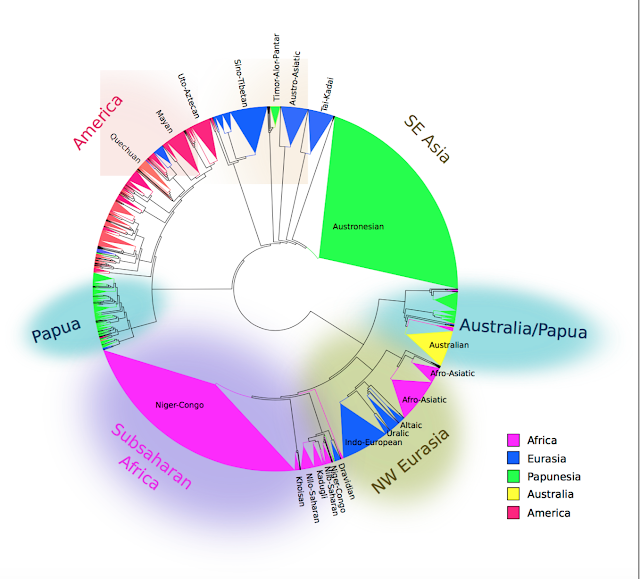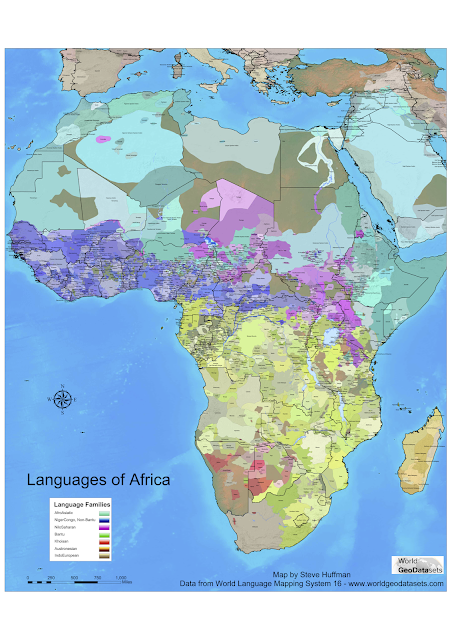Linguistic Diversity should be in Gapminder
I think that data on linguistic diversity should be in the amazing online tool Gapminder. Gapminder aims to spread a fact-based world-view on matters concerning social, economic and environmental development at local, national and global levels. I believe that data on linguistic diversity has a place in that discussion and can be included relatively easily. I'd like to ask for your assistance in spreading the word so that this might happen, please do so by sharing this post or this link.
There is a brilliant project called Gapminder that aims to make statistics about the development of our world more accessible. They are fighting against ignorance and trying to bring hard facts into world political discussions on economy, health, birth rates, gender biases in education and much more. They've made tons of educational and fun videos, see them here and you yourself can also play around with tons of interesting stats here. It's easy and extremely interesting. Warning: might occupy your entire day - it's that great.
So, now that we've introduced Gapminder I'd like to present the idea that it should also include information about linguistic diversity. The good people at Gapminder often get suggestions for new variables that the should include, which is why they've set up a handy form for this purpose. I submitted this idea there.
I think that besides including stats on birth rates, life expectancy, GDP, etc., Gapminder should also include stats on:
Why?
Well, for one it is always a good idea to share with people the diversity of the world's languages and the threat they're under - this is a reason in and of itself.
However, in the case of Gapminder we'd also like to be able to compare the development of these variables over time with other variables in the data set (such as population and GDP). I believe that these variables are interesting because they interact with colonialism, climate, poverty, economic growth and globalisation. As an example, see this publication on the correlation between economic growth and language endangerment (Amano et al 2014).
As a diversity linguist, I am of course interested in the historical/evolutionary reasons for diversity to occur and what is happening in the world now. Needless to say, the loss of linguistic and cultural diversity is a loss to all of us on this planet. Two of the most harmful myths that contribute to this are that a) some languages are better than others and b) multilingualism is bad. I stress this because two of the drivers of language extinction are economic growth and colonialism and this, in addition to the two myths just mentioned, leads to misunderstandings that language endangerment is not a problem. But, we need not get into this in detail right now.
Is the data suitable? How would we get it?
This information can be relatively easily retrieved* from online public databases such as the Ethnologue, Glottolog and UNESCOs Atlas of the Worlds Languages in Danger. I am a linguist and I can help out with this. I like Gapminder a lot and I'd be more than happy to contribute and I know others who would be too. The data has documented sources, for most variables there are good enough time series for most/all countries and territories of the world and the time series extend at least over 5 years.
Thank you for your time, I look forward to hearing what you think about this.
p.s. Gapminder är ett Sverige-baserat projekt och jag råkar vara svensk, så om någon vill prata om det här på svenska istället så går det också bra.
References
Tatsuya Amano, Brody Sandel, Heidi Eager, Edouard Bulteau, Jens-Christian Svenning, Bo Dalsgaard, Carsten Rahbek, Richard G. Davies, and William J. Sutherland. Global distribution and drivers of language extinction risk. Proc R Soc B, 2014 281:20141574 DOI: 10.1098/rspb.2014.1574
(free online PDF here)
There is a brilliant project called Gapminder that aims to make statistics about the development of our world more accessible. They are fighting against ignorance and trying to bring hard facts into world political discussions on economy, health, birth rates, gender biases in education and much more. They've made tons of educational and fun videos, see them here and you yourself can also play around with tons of interesting stats here. It's easy and extremely interesting. Warning: might occupy your entire day - it's that great.
So, now that we've introduced Gapminder I'd like to present the idea that it should also include information about linguistic diversity. The good people at Gapminder often get suggestions for new variables that the should include, which is why they've set up a handy form for this purpose. I submitted this idea there.
I think that besides including stats on birth rates, life expectancy, GDP, etc., Gapminder should also include stats on:
- number of languages per country (spoken by native speakers, both what is classified as "indigenous" and "immigrant")
- number of second language speakers of English, Spanish and other major languages number of different
- language families per country
- number of endangered languages per country and their different levels
- language of the educational system
Why?
Well, for one it is always a good idea to share with people the diversity of the world's languages and the threat they're under - this is a reason in and of itself.
However, in the case of Gapminder we'd also like to be able to compare the development of these variables over time with other variables in the data set (such as population and GDP). I believe that these variables are interesting because they interact with colonialism, climate, poverty, economic growth and globalisation. As an example, see this publication on the correlation between economic growth and language endangerment (Amano et al 2014).
As a diversity linguist, I am of course interested in the historical/evolutionary reasons for diversity to occur and what is happening in the world now. Needless to say, the loss of linguistic and cultural diversity is a loss to all of us on this planet. Two of the most harmful myths that contribute to this are that a) some languages are better than others and b) multilingualism is bad. I stress this because two of the drivers of language extinction are economic growth and colonialism and this, in addition to the two myths just mentioned, leads to misunderstandings that language endangerment is not a problem. But, we need not get into this in detail right now.
Is the data suitable? How would we get it?
This information can be relatively easily retrieved* from online public databases such as the Ethnologue, Glottolog and UNESCOs Atlas of the Worlds Languages in Danger. I am a linguist and I can help out with this. I like Gapminder a lot and I'd be more than happy to contribute and I know others who would be too. The data has documented sources, for most variables there are good enough time series for most/all countries and territories of the world and the time series extend at least over 5 years.
Thank you for your time, I look forward to hearing what you think about this.
p.s. Gapminder är ett Sverige-baserat projekt och jag råkar vara svensk, så om någon vill prata om det här på svenska istället så går det också bra.
References
Tatsuya Amano, Brody Sandel, Heidi Eager, Edouard Bulteau, Jens-Christian Svenning, Bo Dalsgaard, Carsten Rahbek, Richard G. Davies, and William J. Sutherland. Global distribution and drivers of language extinction risk. Proc R Soc B, 2014 281:20141574 DOI: 10.1098/rspb.2014.1574
(free online PDF here)
* In the case of second language speakers and language of the educational systems there is definitly less data and lower quality than the other measures, but it is still possible to get information, albeit harder than for the other variables.



Comments
Post a Comment